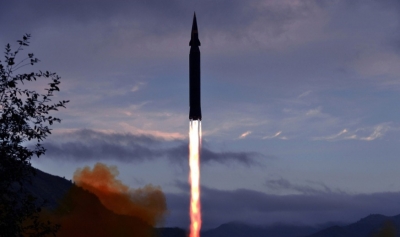US completes construction of radar designed to detect missiles from N.Korea
By IANS | Published: December 7, 2021 10:03 AM2021-12-07T10:03:23+5:302021-12-07T10:15:07+5:30
Seoul/Washington, Dec 7 The US has completed the construction of a new long-range radar in Alaska that is ...

US completes construction of radar designed to detect missiles from N.Korea
Seoul/Washington, Dec 7 The US has completed the construction of a new long-range radar in Alaska that is designed to give early warnings for incoming ballistic missiles from North Korea and other countries, a top defence official said.
Vice Adm. Jon Hill, director of US Missile Defense Agency, also explained the new long-range discrimination radar (LRDR) will be powerful enough to discriminate or identify lethal objects, such as warheads, allowing the US to successfully intercept such objects, Yonhap News Agency reported on Tuesday.
"There's a rogue nation there (in the INDO-PACOM region) that is targeting the US, (has) demonstrated ballistic missile capability time and again and very recently," Hill said in a virtual media roundtable, referring to North Korea.
"So the radar was strategically placed in Alaska, so with this wide field of view that we can capture threats coming from that region," he added.
His remarks came shortly after the US marked the initial fielding of the new radar, which the MDA director said will likely become fully operational "roughly in 2023" after testing and systems integration.
The US began constructing the long-range radar following a series of missile provocations from North Korea.
Pyongyang has maintained a self-imposed moratorium on long-range ballistic missiles since November 2017, but staged several short-range missile tests this year, including the test launch of a self-claimed hypersonic missile in September and a submarine-launched ballistic missile the following month.
Hill said the LRDR will eventually be upgraded to track hypersonic missiles, though its current focus is to detect ballistic missile threats.
Still, the radar will be "very powerful" and will "pick out the lethal objects", as opposed to decoys or non-lethal objects from a missile, such as boosters or fuel cans.
Disclaimer: This post has been auto-published from an agency feed without any modifications to the text and has not been reviewed by an editor
Open in app